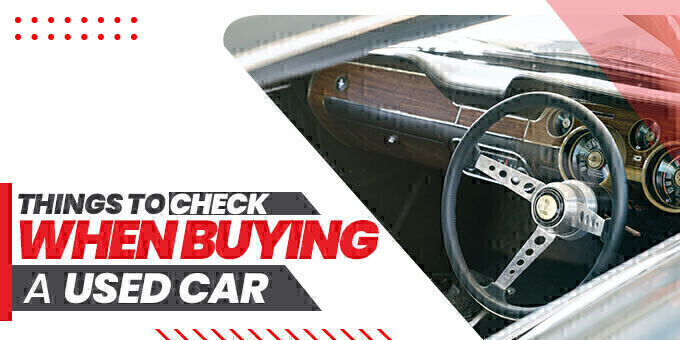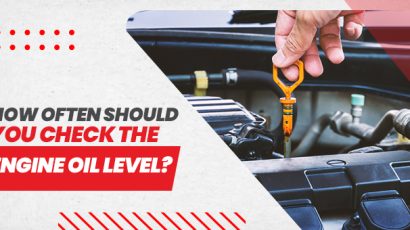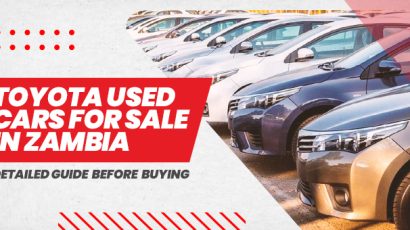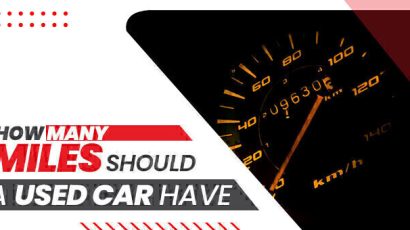
Finding a used car that is in good condition and is trouble-free is 0 parts luck and 100% your research skills and investigation of the car. If you know how to observe for potentially problematic areas and determine how reliable a used car is, then you will be saved from future expenses as well. So, what are the things to check when buying a used car? The following information will help you:
Pre-shopping:
The first step of inspecting a used car begins by you looking at each model and find out which ones are the most reliable. Online used car dealerships can help you with this. You can also enlist the help of an informed friend to help you identify which cars are likely to have trouble spots.
Inspection Checklist:
Whether you are buying a used car from an acquaintance or a dealer, it is important to have a list of things you want to check in a car. Alternatively, you could take it to your mechanic to get a complete inspection and an unbiased opinion.
It is important to know that if you are buying from an individual, the seller may not give out much information, and you will be responsible for asking the relevant questions. Buying from a dealership gives you a safety net, as you get a few legal rights as well as the service history of the car. The dealer may even give an extra warranty and breakdown coverage.
In either case, your inspection checklist should cover the following areas:
-
Engine:
The engine is the most important component of a vehicle and tends to put up with the most wear and tear. This makes it vital to have regular maintenance of the engine and its parts.
When scanning the engine, make sure to check underneath for any leaks. If there is oil on the tarmac where the car is parked, or the car has sludge underneath, it means the car is leaking oil.
You should also check the oil of the car and make sure that the dipstick reading is at the optimal level and that the oil is the right consistency and color. Inspect for any dirt or grime on the connectors as this may indicate a badly maintained or serviced vehicle.
Check the head gasket and ensure it is not blown, as this can cause several problems, including engine failure. Make sure to also turn the engine on and check for the exhaust smoke colors. If the exhaust smokes for more than a few minutes then it could also be indicative of a bigger issue.
-
Gearbox and Clutch:
Different types of gearboxes may act differently, which makes it all the more important to check it. In a manual car, the car should begin to move when you release the clutch pedal, but if you have to floor it to get the car to move, the clutch may need some adjustment.
Gears should shift easily as well, and any resistance or noise means there is a problem. When checking out a car, make sure to use all of the gears to get a complete idea.
-
Bodywork:
Doing an external check of the car involves looking for any signs of repainting or replacement panels. This might suggest the car was in an accident. Search for dents and chips, and the door seals for possible leaks.
Examining the car from outside includes checking it from underneath, and its interiors as well. Make sure there isn’t any rust on the metal body panels as it might need to be fixed.
Any visible signs of damage from a car crash should not be taken lightly, and make sure that past repairs have been done completely. Make sure the front and rear end of the car are damage-free and do not have any bent panels under the bonnet.
-
Wheels and Tires:
Scrutinize all four tires and the spare wheel, if it is included. Grazes are common but bent wheels or large dents in the rims may need to be repaired or replaced. The tires should not have cuts, gouges, splits, or bulges.
If the tire is worn out from the middle, it may be a sign of under or over inflation, which means it needs to be replaced.
-
Interior:
The interior check should include the upholstery, dashboard, roof lining, and equipment. A car that has not been driven for many miles should not have a worn-out interior, otherwise, it may indicate a problem.
The luggage area should have a dry carpet, and if it has a rear seat folding mechanism, it should be working properly.
Turn on the ignition and make sure the warning lights are operating, and that the lights, the radio, infotainment system, windows, central locking, and climate control system are all working properly.
-
Take the car on a test drive:
After conducting a thorough visual check, take the car on a test drive as well, and see how it performs on the road. Listen for any unusual sounds and test the car at different speeds. Ensure the brakes and clutch respond and work well.
-
Documentation:
Most importantly, if you are buying used cars for sale in Kenya, then ask to check the car’s history for work done and parts fitted. This can also help you cross-check the mileage of the car with what is shown on the dashboard.
Getting the history of the vehicle also helps you in identifying if the car has any outstanding finance on it, or if it has been recorded as stolen. This will help assure you into trusting the seller and give you your own peace of mind for many years.










